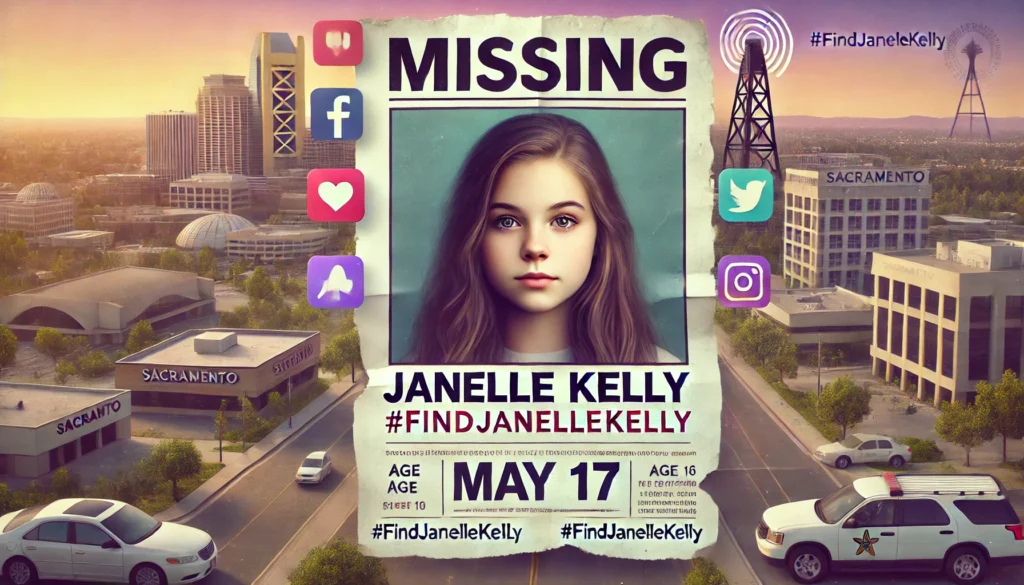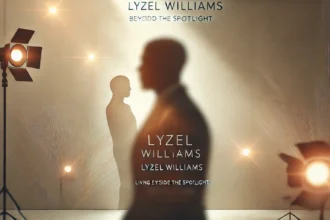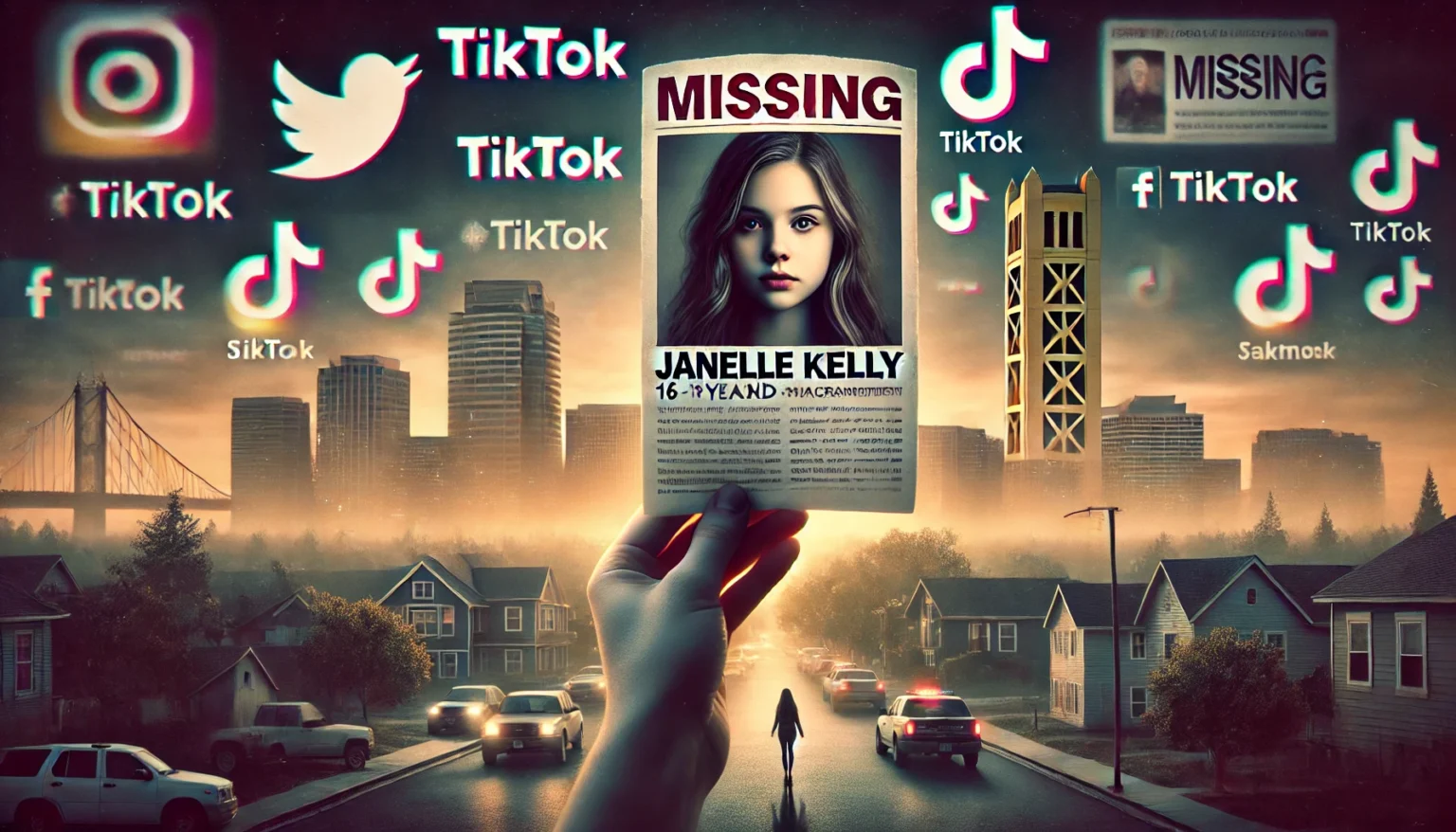The case Janelle Kelly missing, a 16-year-old from Sacramento, has taken the internet by storm.
This article will dive into the truth behind the viral story of teen Janelle Kelly missing, how it spread on platforms like TikTok, and the deeper societal issues it reflects.
It is worth reading to understand how media and social networks influence our perception of reality.
Introduction to Janelle Kelly Missing

The story of Janelle Kelly missing started as a viral sensation on social media. People were concerned about the missing person case of the Sacramento teen Janelle Kelly missing for six days.
The story gained widespread attention and raised questions about her safety and whereabouts. This section will introduce the basic facts and timeline of the Janelle Kelly missing case.
Janelle Kelly, a 16-year-old from Sacramento, was reported missing on May 17. Her friends and family were worried, and soon, the story spread on social media. People shared posts and videos expressing their concern for Janelle.
The hashtag #FindJanelleKelly started trending, and the community rallied to search for her.
Was It a Satire or Reality?
Many people were confused about whether the story was real or a form of satire. The truth behind the viral story of Janelle Kelly missing is complex, as it involved a skit that many initially took seriously.
This section will explore how the story was presented and the satirical elements involved.
The confusion stemmed from a video titled “Missing Teen’s Friends Go on TV to Plead for Her Release,” which was aired on The Onion’s platform. The Onion is known for its satirical content, but many viewers initially believed the story was real.
The video showed Janelle’s best friends, Megan Cleary and Katie Clements, admitting to ignoring a call from Janelle and making a public plea for her return.
The Viral Spread on TikTok
TikTok played a significant role in spreading the news about Janelle Kelly missing. Videos related to Janelle Kelly quickly gained traction, with users sharing their concern for Janelle and speculating about her disappearance.
This section will detail how the story went viral on TikTok and the impact of social media on the narrative.
Users on TikTok began posting videos discussing the case, expressing their worry, and even creating theories about what might have happened to Janelle.
The platform’s algorithm amplified these videos, leading to widespread awareness and engagement. Influencers and ordinary users alike contributed to the viral spread, making the story one of the top trends on TikTok.
The Role of Media in Sensationalizing Missing Person Cases
The media has a tendency to sensationalize missing person cases, often skewing the portrayal of missing person stories.
This section will analyze the media’s role in the Janelle Kelly case and how it reflects broader issues in media practices and sensationalized news.
Media coverage often focuses on dramatic and emotional aspects of missing person cases, sometimes at the expense of accuracy and sensitivity.
In Janelle Kelly’s case, the satirical video highlighted the media’s tendency to sensationalize missing person stories. It served as a critique of how real-life victims of abductions and their families are often portrayed in the media.
Understanding the Satirical Intent
The skit about Janelle Kelly missing was a satirical piece aired on The Onion’s platform.
This section will delve into the satirical intent behind the story, explaining how satire was used as a form of social criticism and a mirror to society’s attitudes towards missing person cases.
The Onion’s skit was meant to be a form of social criticism, highlighting societal apathy and the media’s often insensitive and disrespectful coverage of real-life victims.
By creating a fictional character and a dramatic narrative, The Onion encouraged viewers to question the authenticity of media stories and their own susceptibility to media narratives.
Public Reaction to the Story
Public reaction to the tale of Janelle Kelly was mixed, with some expressing genuine concern for Janelle and others realizing the satirical nature of the skit.
This section will explore how different groups of people reacted to the story and what it reveals about public perception.
Many viewers initially expressed genuine concern for Janelle, sharing the video and posting messages of support. However, once the satirical nature of the skit became apparent, reactions shifted.
Some people appreciated the critique of media sensationalism, while others felt the skit was insensitive to real-life victims of abductions and their families.
Impact on Real-Life Missing Person Cases

The story of Janelle Kelly missing, despite being fictional, had real-world implications for how people view missing person cases. This section will discuss the impact of the viral story on real-life cases and the broader implications for public awareness and media coverage.
The viral spread of the Janelle Kelly story brought attention to the issue of missing person cases and the often skewed portrayal by the media. It sparked conversations about the need for responsible and empathetic journalism that respects the dignity of victims and their families.
The story also highlighted the power of social media in shaping public perception and the importance of verifying information before sharing.
Also Read: HopTraveler.com Easy Travel Planning with HopTraveler
Media Narratives and Their Influence
Media narratives play a crucial role in shaping public perception of missing person cases. This section will explore how the Janelle Kelly case reflects broader trends in media practices and the influence of sensationalized news.
The case of Janelle Kelly served as a reminder of the media’s tendency to sensationalize missing person stories, often at the expense of factual reporting and empathetic coverage.
It underscored the need for media outlets to prioritize accuracy and sensitivity when covering such cases and to avoid creating narratives that trivialize the experiences of victims and their families.
Responsible Reporting and Empathetic Coverage
Responsible and empathetic journalism is essential in covering missing person cases. This section will discuss the principles of responsible reporting and how media can better serve the public and the victims’ families.
Journalists should strive to report on missing person cases with accuracy, respect, and empathy.
This means avoiding sensationalism, verifying information before publication, and being mindful of the impact their stories have on victims and their families.
Media outlets should also focus on raising awareness and providing valuable information to aid in the search for missing individuals.
FAQs
Who is Janelle Kelly?
Janelle Kelly is a fictional character created in a satirical skit by The Onion.
Was Janelle Kelly really missing?
No, the story of Janelle Kelly missing was a satire and not a real event.
Why did the story of Janelle Kelly go viral?
The story went viral due to its dramatic portrayal and the spread of videos on TikTok.
What was the purpose of the satirical skit?
The skit aimed to critique media sensationalism and societal attitudes towards missing person cases.
How did people react to the Janelle Kelly story?
Reactions were mixed; some people were genuinely concerned, while others recognized it as satire.
What platform aired the Janelle Kelly skit?
The skit was aired on The Onion’s platform, known for its satirical content.
Did the Janelle Kelly story affect real missing person cases?
Yes, it sparked discussions about media coverage and the need for responsible reporting in real-life cases.
What role did TikTok play in the story?
TikTok helped spread the story quickly, with users sharing and discussing the skit widely.
What lesson can be learned from the Janelle Kelly missing story?
The importance of verifying information and the impact of sensationalized media coverage on public perception.
How should the media cover missing person cases?
With accuracy, empathy, and respect for the victims and their families, avoiding sensationalism
Conclusion
The story of Janelle Kelly missing, despite being fictional, offers important lessons about media practices, public perception, and the power of social media. This section will summarize the key points and the broader implications for society.
The viral story of Janelle Kelly missing highlights the media’s tendency to sensationalize missing person cases.
Satire can be a powerful tool for social criticism, encouraging viewers to question media narratives and their own perceptions.
Public reaction to the story varied, revealing the complex relationship between media, social media, and public perception.





